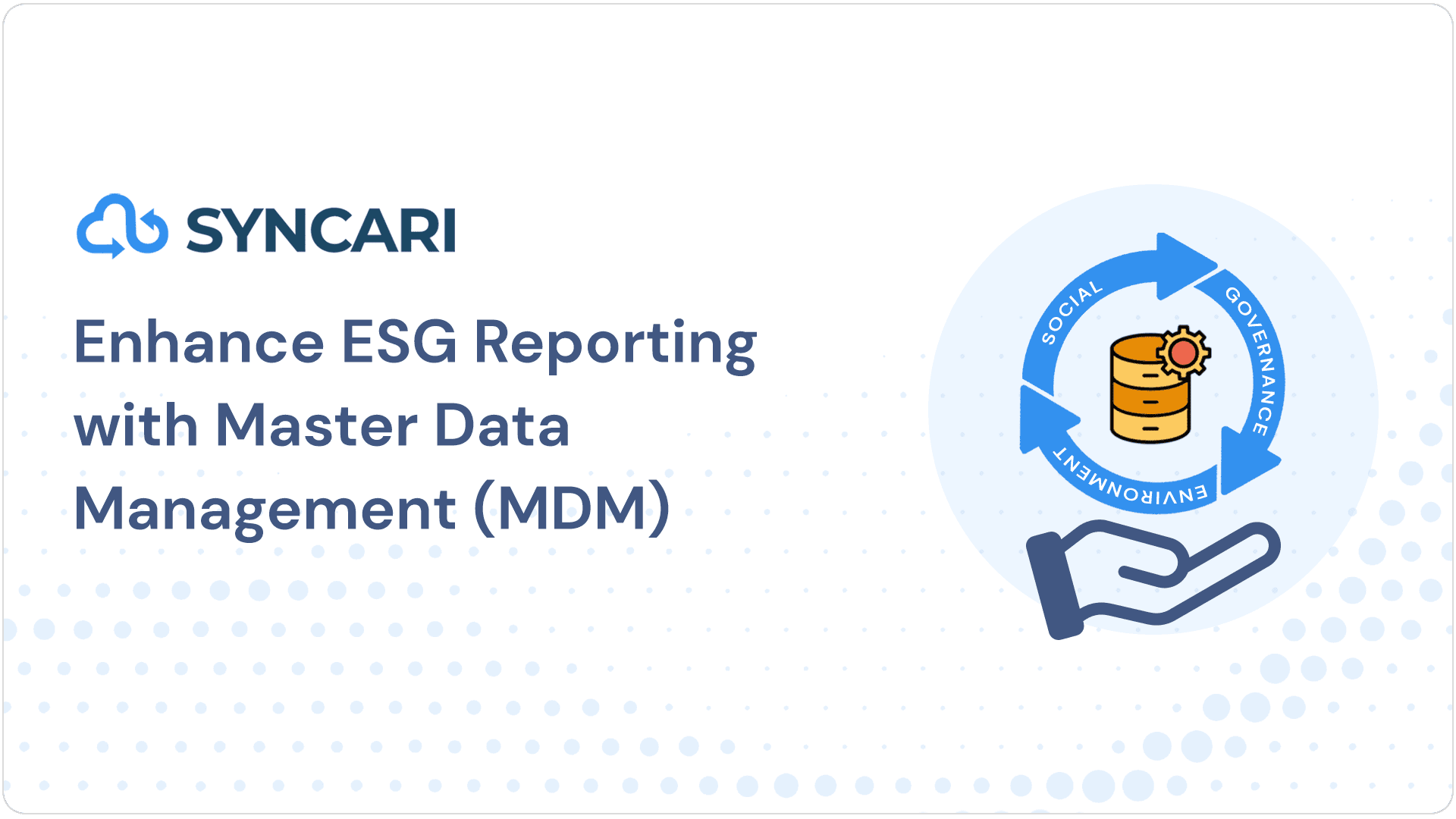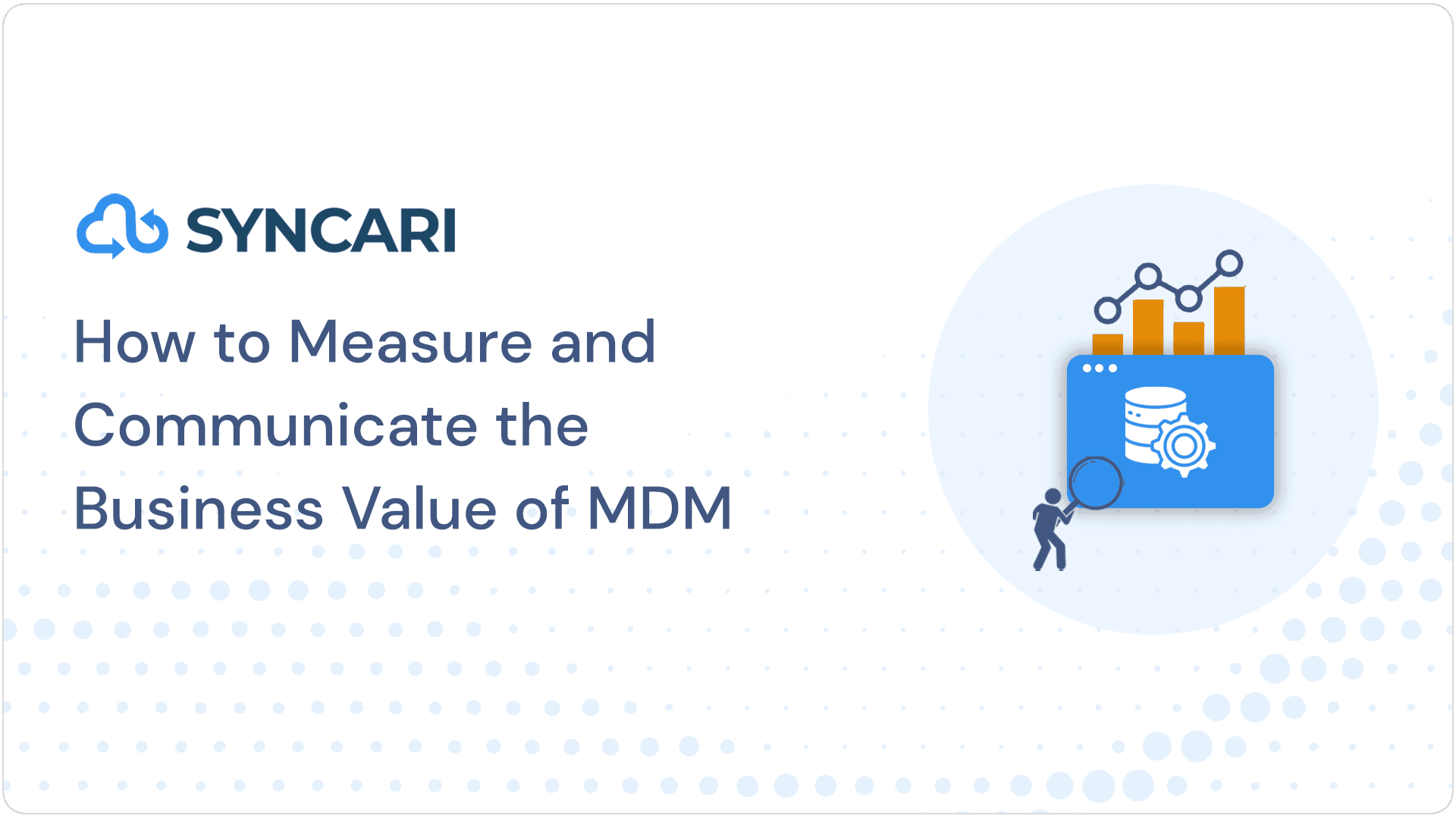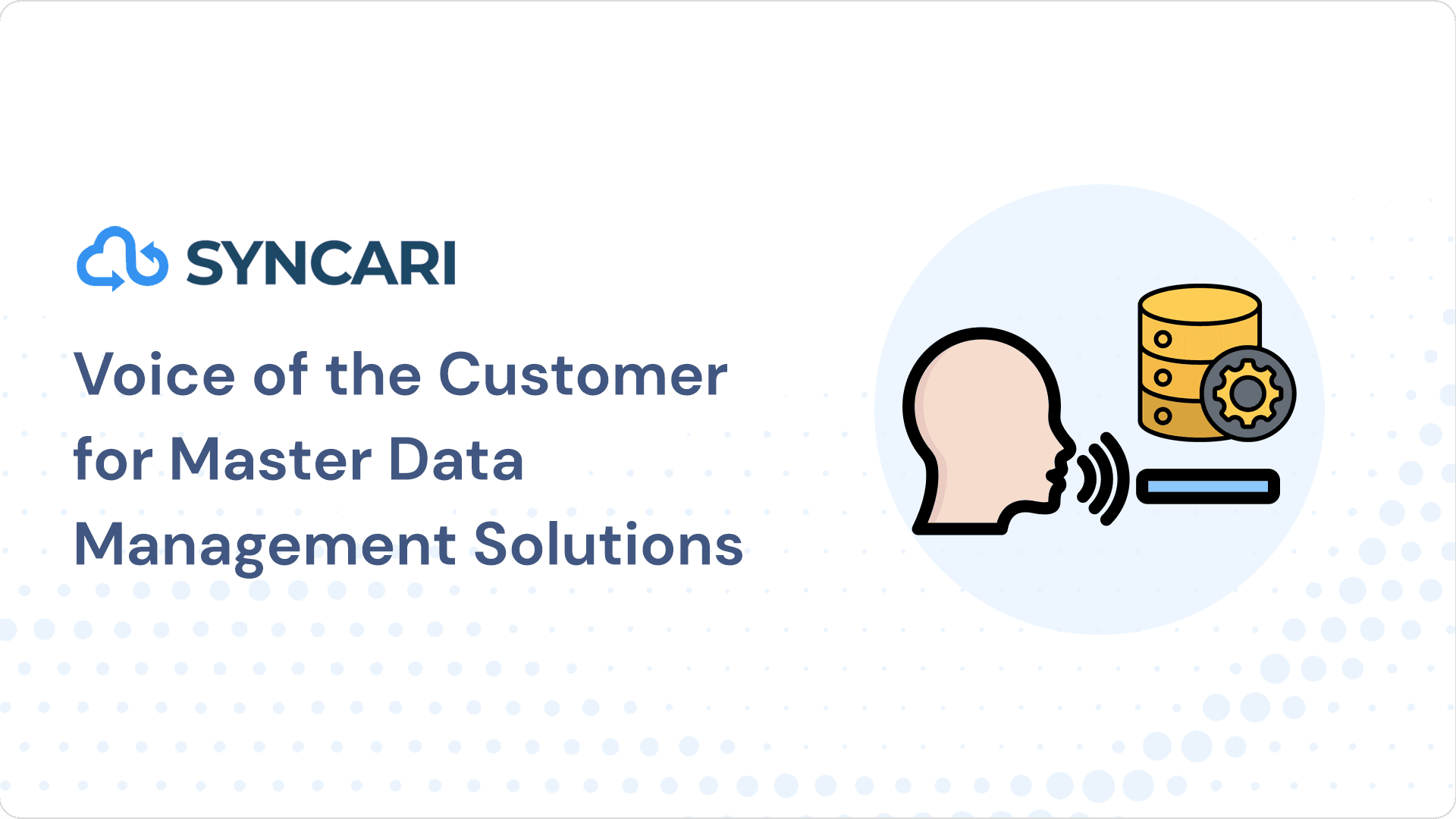Navigating the intricate world of B2B customer journeys and understanding their impact on your business can be a challenging task. However, this in-depth understanding is the key to unlocking a successful customer journey analytics setup, which is one vital piece of a building a Customer 360.
This blog post will guide you through the complex B2B customer journey, unravel the difference between customer lifecycle and journey, and shed light on the role of data strategy and data modeling in shaping your customer journey. By the end of this journey, you’ll be equipped with the necessary tools and knowledge to navigate and optimize your B2B customer journey.
What is a B2B customer journey?
The B2B customer journey, a detailed roadmap of a business’s path from initial contact through purchasing and beyond, is fundamental when setting up customer journey analytics for the first time. This intricate journey, often more complex than B2C due to multiple decision-makers, longer sales cycles, and high-stake transactions, stretches from awareness to exploration, consideration, purchase, and post-purchase stages.
Breakdown of the customer journey:
- Awareness: This is the first stage of the B2B customer journey where the potential customer becomes aware of your business and the products or services you offer. This can be through a variety of channels such as advertisements, online content, social media, trade shows, or word of mouth.
At this stage, the potential customer realizes that they have a need or problem that requires a solution. Your marketing and sales strategies should focus on building brand awareness, educating the market about the problem you solve, and positioning your business as the best solution.
- Acquisition: In the acquisition stage, the potential customer has not only become aware of your business but is also considering making a purchase. They are evaluating different options in the market, comparing them, and doing in-depth research.
It’s critical at this point to differentiate your offerings from your competitors and clearly communicate the value of your product or service. Sales and marketing alignment is crucial in this stage to ensure a seamless transition for the prospect. Content such as case studies, product demonstrations, and testimonials can help convince potential customers that your solution is the best choice.
- Onboarding: Once the customer has decided to purchase, the onboarding stage begins. This is where the customer is introduced to your product or service. This process needs to be smooth and informative. If the onboarding process is complex, it can lead to customer dissatisfaction and churn.
This phase often includes initial training, setting up the system or service, and answering any questions the customer might have. It’s important to provide clear instructions, resources, and support to help the customer get started.
- Adoption & Expansion: The adoption and expansion stage encompasses not only the initial adoption of your product or service but also the continuous growth and utilization of your solution by customers. It involves helping customers fully integrate your offering into their operations and encouraging them to expand its usage for maximum value.
This can be achieved by regular follow-ups, offering advanced training, providing tips and best practices, and consistently showing the value of your solution. Satisfied customers in this stage not only become loyal but can also turn into advocates for your brand, spreading the word and helping to attract new customers.
Understanding this journey is essential, offering deep insights into the needs, behaviors, and motivations of your business customers, thereby helping to tailor interactions, streamline sales processes, enhance customer experience, and foster loyalty and growth.
Setting up customer journey analytics with a clear understanding of this journey provides a framework for data-driven decision making, allowing you to optimize marketing and sales strategies, identify improvement areas, and meet both business goals and customer expectations.
Remember that these stages often overlap and customers can go back and forth between stages. The journey isn’t always linear and it’s crucial to be proactive and attentive to the customer’s needs at each stage.
What’s the difference between customer lifecycle and customer journey?
The first thing we need to define is that the customer lifecycle and the customer journey begin at the top of the funnel. We’re not talking only about paying customers, we’re also talking about potential customers. Why is this important? Because customers who have a positive experience with your company from the minute they enter your funnel are more likely to close faster, spend more, cost less, and renew at a higher rate.
The customer lifecycle, at the simplest level, defines what stage the customer is in. Think of it as the framework for how you will engage your prospects and customers. It allows you to define the business processes associated with each stage. Before you can truly carve out an effective engagement strategy, you need to understand where people are in the funnel.
Are they at the top of your funnel trying to figure out who you are and what you do as a company? If so, you’re likely introducing them to your brand, establishing credibility, and trying to earn their trust.
Are they a loyal customer that has been with you several years? If so, they will have a very deep relationship with your brand, and the way you engage them is going to be different than the person at the top of the funnel.
One of the biggest benefits of defining your customer lifecycle is that it allows you to figure out how to bring value to your customers at each stage. Another benefit is that it gets Marketing, Sales, and Customer Success on the same page. When internal teams are aligned and working in concert, the customer wins.
The customer journey, on the other hand, is all about the experiences that happen throughout the customer lifecycle. You want to roll out the red carpet for your customers, right? Of course you do! But do you know how to engage them effectively at every stage in their journey? Do you know how to bring value to them and influence their decision making as they move through the funnel? Do you know how to eliminate friction and deliver flawless customer experiences at scale?
What is customer journey analytics?
Customer journey analytics is a data-driven approach that tracks, analyzes, and understands the interactions customers have with a business across multiple touch points over time. It provides a holistic view of the customer’s path from the initial contact, through various engagements, to the eventual purchase and beyond.
This method includes collecting and integrating data from various customer interactions, whether they occur online (e.g. website visits or product engagements) or offline (e.g. in-person event engagement). The data is then analyzed to provide insights into customer behavior, needs, preferences, and motivations at each stage of the journey.
The ultimate goal of customer journey analytics is to enhance the customer experience by identifying friction points, optimizing processes, personalizing communications, and predicting future customer behaviors. It allows businesses to make data-informed decisions, improve customer satisfaction index, boost retention, and increase overall profitability.
What’s the relationship between customer data and the customer journey?
Data is absolutely critical to the customer journey. It is the foundation that GTM teams build upon, and directly impacts a company’s ability to scale. It enables Marketing teams to send the right message at the right time. It enables Sales teams to follow up intelligently. It enables Customer Success teams to identify and prevent churn.
Let’s look at Audience Segmentation, for example, to see how data impacts the customer journey. It’s a critical topic that is often overlooked because of its assumed simplicity. In reality, it is quite complex. Not only that, it has a direct impact on every GTM team’s ability to engage their audience effectively.
Here are a few questions to get the wheels turning. How many companies have you worked at that maintain a completely accurate and reliable customer database? How much trust do you have in your team’s ability to create audience segments correctly? Is your customer data accessible to your revenue teams or does it live in silos?
Data has to be accurate, it has to be trustworthy, and it has to be available. Every single communication is a chance to either delight the customer or add friction to the journey. Whether we’re talking about leveraging marketing automation to send out thousands of emails, utilizing a caption call app for accurate transcription sales automation sending out sequences, or personal outreach, having accurate and accessible data makes all the difference in the world.
Who owns the customer journey? Can it be a single owner?
It’s a team effort. It takes alignment across Sales, Marketing, and Customer Success to define the stages and the associated business processes in order to deliver the best experience for the customer. This is where breaking down silos and working together cross-functionally becomes essential.
It’s also important to understand the need for optimizing the customer journey over time. There are a lot of people and a lot of strategies involved. Layer in the fact that things are constantly changing for both the customer and the business, and you can see where this has to be a joint effort. Sales, Marketing, and Customer Success all have expertise in different areas of the customer journey. It’s about working together to streamline the journey and eliminate friction, creating a win for the business and a win for the buyer.
How do you analyze the customer journey?
Analyzing the customer journey and building strong relationships are key considerations, especially in the B2B context. While relationships may not be as prominent in B2C, they play a significant role in B2B interactions. Additionally, incorporating partners into the mix can be a unique strategy deployed in B2B. Here’s how you can integrate these aspects into the analysis of the customer journey:
- Collect Data: Use customer journey analytics tools to collect data from various customer touch points. This could include website visits, email interactions, social media engagement, customer service interactions, purchase history, and more. The aim is to gather comprehensive data about how customers are interacting with your business.
- Integrate & Unify Data: Because customers interact with your business across multiple channels, it’s important to integrate your data to create a unified view of the customer journey. This might involve combining data from your website analytics, CRM system, email marketing platform, and other sources.
- Segment Your Customers: Segmenting your customers based on their behaviors, needs, characteristics, and relationships is essential for a comprehensive understanding of your customer base. Consider factors such as product type, location, engagement level, and the relationships between partners, contacts, product, and users within accounts.
This level of segmentation enables personalized strategies, tailored communications, and identification of growth opportunities. By embracing relationship-based segmentation, you can drive adoption, strengthen customer relationships, and foster long-term loyalty.
- Analyze the Data: Dig into your integrated, segmented data to gain insights. Look for patterns and trends, such as common paths to purchase, bottlenecks where customers drop out, or touchpoints that drive high engagement. Analytics tools can help you visualize your data and make it easier to spot these insights.
- Distribute Insights: Based on your analysis, generate and distribute insights about your customer journey. This might involve identifying key moments of truth where customers make crucial decisions, uncovering pain points that need to be addressed, or spotting opportunities to enhance the customer experience.
- Take Action: Finally, use your insights to inform your strategies and actions. This might involve optimizing your website, personalizing your marketing messages, improving your customer service, or enhancing your products or services.
Remember, customer journey analytics isn’t a one-and-done process. It’s a continuous cycle of collecting data, analyzing it, generating insights, taking action, and then starting the process over again. By regularly analyzing your customer journey analytics, you can ensure that your strategies stay customer-centric, relevant, and effective.
Why is it so hard to provide a consistent and cohesive customer experience across many teams/touchpoints?
Providing a consistent and cohesive customer experience across multiple teams and touchpoints can be challenging due to various factors:
- Insight Silos: Often, valuable customer insights are trapped within specific departments or roles, such as analytics or business intelligence.
For example, an analytics team may identify that a customer is at risk, but if this information doesn’t reach the customer service representative who can take action, it hinders the ability to address the issue effectively. Bridging these insight silos is crucial for enabling seamless collaboration and empowering teams to act on valuable customer insights.
- Technology Silos: When key business systems and tools do not integrate and communicate with each other, it creates technology silos. This lack of integration hampers the flow of information and data across different touchpoints, making it challenging to provide a consistent customer experience.
By breaking down these technology silos and implementing systems that can share data seamlessly, businesses can enhance their ability to deliver a cohesive experience throughout the customer journey.
- Department Silos: Departments within an organization may operate independently, focusing on their specific objectives and goals. However, when teams are not aligned and strategizing on how to deliver the best customer experience possible, it can result in a disjointed experience for the customer.
Breaking down department silos and fostering cross-functional collaboration and communication is essential to ensure a consistent and cohesive customer experience across all touchpoints.
- Poor Data Quality: Data is the lifeblood of effective customer experience management. When data is inaccurate, incomplete, or outdated, it can have a detrimental impact on various aspects of the customer experience.
Poor data quality can lead to challenges such as sending irrelevant messages, routing issues, inaccurate sales intelligence, embarrassing communications, and more. Ensuring data integrity and investing in data quality management practices are vital for delivering a consistent and personalized customer experience.
By addressing these challenges, organizations can strive to provide a consistent and cohesive customer experience. This requires breaking down insight silos, integrating technology systems, fostering cross-departmental collaboration, and prioritizing data quality management. When these barriers are overcome, businesses can deliver seamless experiences that meet customer expectations and drive customer satisfaction and loyalty.
What are the risks of not sitting down to document a customer journey map?
You risk losing business to your competitors that have a more refined customer journey. You risk leaving revenue on the table. You risk a higher customer churn rate. It also reinforces silos in your organization, which is never good. Ultimately, teams should be working together cross-functionally to deliver the best customer experience possible.
How do you create a customer journey?
In order to create a frictionless customer journey, you need a good amount of cross-functional alignment. Start by getting Sales, Marketing, and Customer Success together to define the Customer Lifecycle stages that a potential buyer goes through and the associated business processes. If a buyer goes straight through the funnel, it will look something like this…
Of course it’s not always that simple, some people will get Disqualified, some will be Recycled, some will become Closed Lost. The important thing here is that you establish the criteria for each stage as well as the business rules. For example, is Sales allowed to contact people before they reach the MQL stage? Is Marketing allowed to contact people once they reach SAL? What happens when people move from one stage to the next? It’s easy to step on each other’s toes and create a negative experience for the customer if you don’t have these rules defined.
Once you have your funnel stages and business processes mapped out, it’s time to create a Persona Matrix. This is a pretty quick and easy exercise and it’s another good way to get Sales, Marketing, and Customer Success in the room together. Usually you end up with a combination of empirical data and anecdotal data to complete the matrix.
To start, consider the different types of Decision Makers and Influencers that make up your customer base. What do they care about? How can you help them?
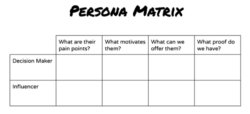
Pain Points – What impedes their success? What causes them frustration or worry?
- E.g. Are they afraid of failure? Are they constantly behind on their work? Are they contributing to their company’s bottom line?
Motivation – What are they motivated by? What will get them to take action?
- E.g. Are they working towards a promotion? Are they trying to learn new skills? Are they looking to save time or reduce costs?
Offer – What can you offer them that speaks to their pain points and motivators?
- E.g. Does your product or solution bring peace of mind, time savings, financial gain, career advancement, etc.?
Proof – How can you back up your offer with proof?
- E.g. Do you have case studies, success stories, 3rd party data, or something else to validate your claims?
The goal is to understand your buyers on a deeper level so you can engage them in a meaningful way. It’s about matching your solution to their needs at a human level. You need to show empathy and understanding, and you need to be able to do it at scale.
Once you finish this, you should have a pretty good baseline for engaging your audience. The next step is to figure out what content to send, and when. Using the information from the Persona Matrix, you can now map out content across your funnel.
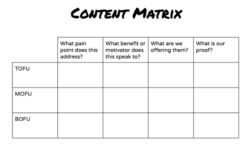
The goal is to take inventory of existing content and map it to your funnel stages based on the personas you identified above. For example, you might have a Blog Post or a Press Release that is suitable for people who are in Top of Funnel (TOFU), a Case Study or eBook for people in Middle of Funnel (MOFU), and a Technical Data Sheet for people in Bottom of Funnel (BOFU). Chances are you will have several pieces of content that map to each stage. However, you might also find that you have a shortage of content for certain stages or certain personas. Creating a Content Matrix makes it easy to see.
Now that you have your personas and content all mapped out, you’re one step closer to doing things like building a fully automated nurture program in your Marketing Automation Platform, or developing a winning sales outreach sequence – which means you’re one step closer to rolling out the red carpet for your customers.
Understanding why Syncari is crucial to customer journey analytics
When it comes to understanding and optimizing the customer journey, data is king. However, the challenge lies in consolidating, analyzing, and effectively utilizing this data from myriad sources. This is where Syncari, a modern Data Automation Platform, becomes invaluable.
Syncari simplifies the data unification process by allowing businesses to integrate data from various systems into a unified, accessible, and actionable format. Here’s why Syncari plays an essential role in customer journey analytics:
- Breaking Down Data Silos: One of the most significant challenges businesses face is data silos, where crucial customer data is stored across multiple systems, limiting access and leading to disjointed customer experiences.
Syncari eliminates these data silos by integrating data across all systems, providing a single source of truth. This unified view of customer data facilitates a better understanding of the customer journey, allowing for personalized and seamless customer experiences across all touchpoints.
- Improving Data Quality: Syncari is designed to enhance data quality by automatically cleaning, deduping, and standardizing data. This leads to more accurate customer journey analytics and ensures that decisions and strategies are based on reliable data.
By eliminating inaccuracies and inconsistencies, Syncari enhances the overall efficiency of marketing, sales, and customer success teams, enabling them to deliver the right message at the right time.
- Facilitating Data Accessibility: Syncari ensures that data is not only unified but also easily accessible to all relevant stakeholders. It democratizes data access, empowering teams to make informed decisions and take data-driven actions.
This accessibility is crucial in aligning internal teams, ensuring everyone is on the same page, and providing a consistent, cohesive customer experience.
- Enabling Real-time Analytics: The dynamic nature of the customer journey requires real-time data analysis. Syncari offers this capability, providing teams with up-to-date insights into customer behavior, needs, and preferences.
With Syncari, businesses can respond to changes in the customer journey promptly and effectively, enhancing customer experience and satisfaction.
- Automating Data Management: Syncari automates the tedious and time-consuming processes associated with data management. This automation frees up valuable time and resources, allowing teams to focus more on strategic tasks like optimizing the customer journey.
In conclusion, Syncari is an indispensable tool for any business seeking to understand and optimize their customer journey. It breaks down data silos, enhances data quality, facilitates data accessibility, enables real-time analytics, and automates data management. By harnessing the power of Syncari, businesses can unlock deeper insights into the customer journey, make data-informed decisions, and deliver an exceptional customer experience.
Conclusion
Customer journey analytics is a strategic approach that enhances customer interactions across various touchpoints. By employing accurate and accessible data, you can identify and alleviate pain points, optimize processes, and personalize communications, all in a bid to improve the customer experience and boost profitability.
This requires a team effort from Sales, Marketing, and Customer Success, each contributing their expertise to ensure a unified and consistent customer experience. However, challenges like technology and departmental silos, along with poor data quality, can obstruct a seamless customer journey.
To overcome these hurdles, tools like Syncari, a modern Data Automation Platform, prove invaluable. Syncari simplifies data unification, breaks down data silos, improves data quality, facilitates data accessibility, and enables real-time analytics. By investing in such tools and mapping out your customer journey, you can provide a more personalized and enriching customer experience. This not only leads to better customer satisfaction but also increases business profitability.
